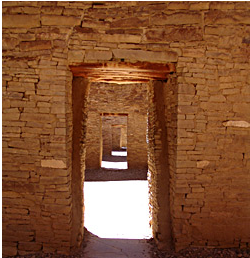Publication Date
11-15-2019
Abstract
This dissertation explores how seventeenth-century Spanish colonial households expressed their group identity at a regional level in New Mexico. Through the material remains of daily practice and repetitive actions, identity markers tied to adornment, technological traditions, and culinary practices are compared between 14 assemblages to test four identity models. Seventeenth-century colonists were eating a combination of Old World domesticates and wild game on colonoware and majolica serving vessels, cooking using Indigenous pottery, grinding with Puebloan style tools, and conducting household scale production and prospecting. While assemblages are consistent in basic composition, variations are present tied to socioeconomic status. This blending of material culture into a new set of identity markers points to a self-sufficient, household-based settlement pattern linked throughout the region, representing the transition over time from a broader New Spain material culture package to a New Mexico colonial identity package, which eventually developed into the modern Nuevo Mexicano identity.
Keywords
Historic Archaeology, Museum Collections, Identity, Spanish Colonial, Artifact Analysis
Document Type
Dissertation
Language
English
Degree Name
Anthropology
Level of Degree
Doctoral
Department Name
Anthropology
First Committee Member (Chair)
Emily L. Jones
Second Committee Member
Frances Hayashida
Third Committee Member
Bruce Huckell
Fourth Committee Member
Christopher Wilson
Recommended Citation
Gabe, Caroline Marie. "Seventeenth-Century Spanish Colonial Identity in New Mexico: A Study of Identity Practices through Material Culture." (2019). https://digitalrepository.unm.edu/anth_etds/184
Included in
Archaeological Anthropology Commons, Chicana/o Studies Commons, Cultural History Commons, Historic Preservation and Conservation Commons, Latin American History Commons, Latin American Studies Commons, Museum Studies Commons, United States History Commons

